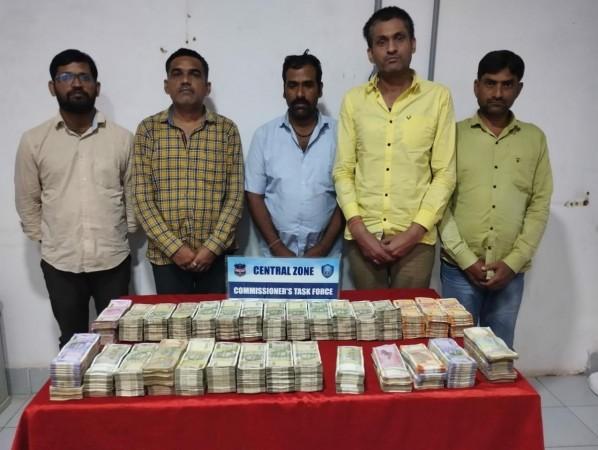Hyderabad Police have busted another Hawala racket and seized Rs 63.50 lakh cash.
Police on Sunday said five persons were arrested for running Hawala racket from the electrical godown of 'Ranuja Marketing' at Troop Bazar.
Acting on credible information, the Commissioner's Task Force, Central Zone, arrested five persons, seized the cash, a two-wheeler, five mobile phones and a cash counting machine.

Kanti Lal (39), owner of the godown, Kishore Singh (42), Pep Singh (47), Mohammed Abdul Fareed (38) and Sandeep Singh (31) were arrested.
The raid was conducted when Hawala money was being collected and distributed. The accused were found in possession of unaccounted money.
This is the latest in a series of Hawala rackets busted in the city during the last few days. Police have seized about Rs 10 crore cash in separate operations.
The cash was seized during heightened vigil by the police in view of by-election to the Munugode Assembly seat in neighbouring Nalgonda district on November 3.
On October 20, police had seized over Rs 1.10 crore cash from four persons. The cash was seized from a car during vehicle checking in the Shainayathgunj police station limits. Police arrested Kamlesh Kumar, Ashok Kumar, Rahul Agarwal and Ratan Singh.

According to police, the main accused Kamlesh Kumar started running a hawala business with others as he was not getting enough profits in the plastic bag business.
On October 10, unaccounted cash worth Rs 3.5 crore that was reportedly being transported to Munugode was seized. Six persons travelling in two cars with the cash were apprehended by the Commissioner's Task Force team.
On October 7, police seized Rs 79.25 lakh and arrested four people, including two Uttar Pradesh natives, under suspicious circumstances during a vehicle checking drive in the limits of Chandrayangutta police station.
Earlier on September 29, a Meerut-based scrap dealer was caught in Hyderabad with Rs 1.24 crore cash. He had told the police that he collected the cash on the instructions of his uncle and was to deliver it to four persons living in the city.
(With inputs from IANS)

















